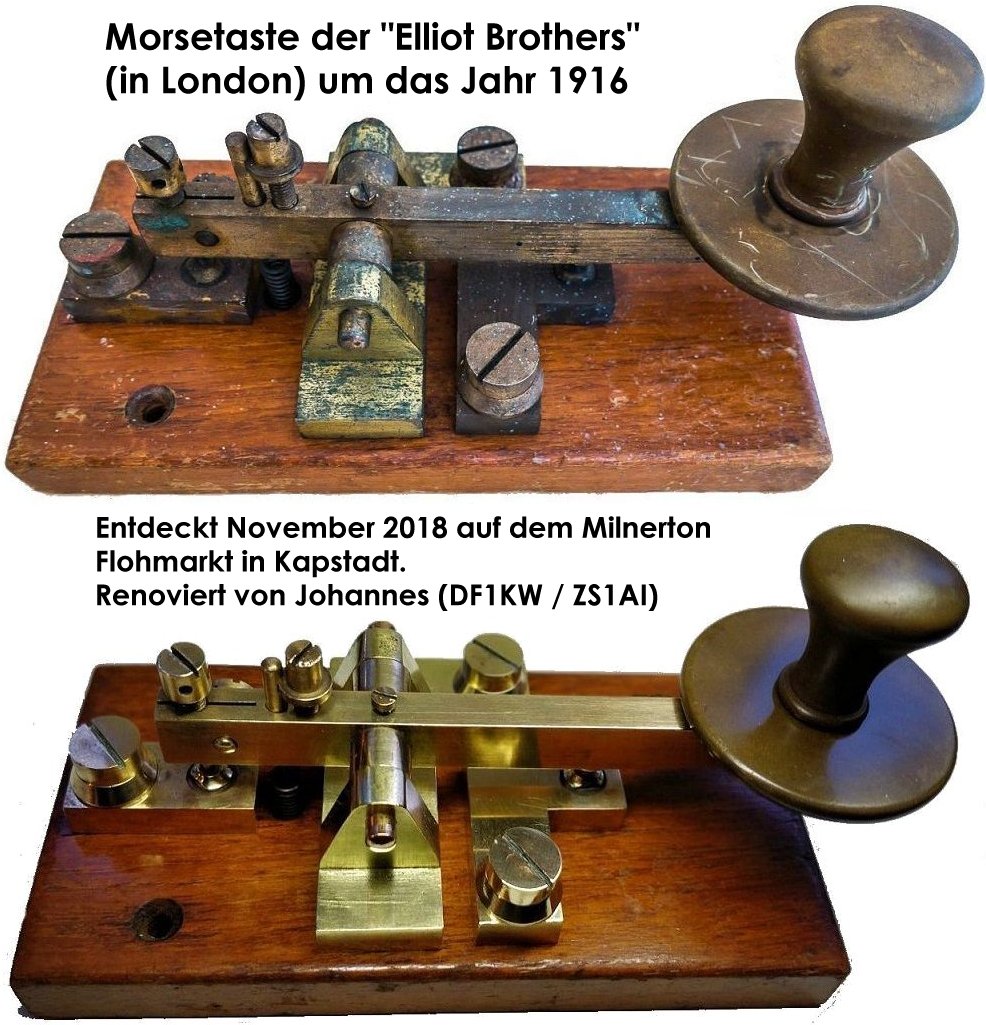
As a licensed radio amateur in Germany (call sign: DF1KW) and South Africa (call sign: ZS1AI) and a fan of new and all sorts of old radio technology, I like to rummage around at every opportunity at the various flea markets, online classifieds markets and social media in Cape Town for hidden treasures. Here is the story of how I got my long sought after "radio gem" this way and what fascinates me about it.
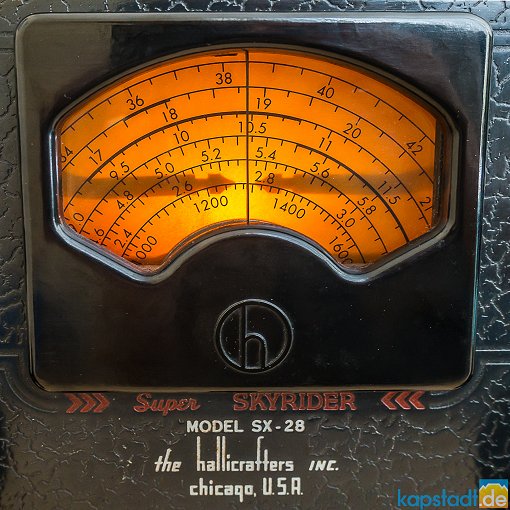
SX-28 Hallicrafters - "Super SKYRIDER"
In February 2023, a post from the CTARC (= Cape Town Amateur Radio Centre) appeared in the local social media in Cape Town with a reference to a shortwave listener (SWL) who, after many years in Somerset West near Cape Town, wanted to move back to his Belgian homeland and sell his radio equipment accumulated over the years, including accessories, to interested parties at short notice and at a reasonable price.
The SX-28 Hallicrafters "Skyrider" was listed among about 20 other radios.
A radio that I personally consider to be one of the most aesthetically pleasing, historic radios. The trim on the top edges of the sides and the rounded corners of the cabinet, as well as the distinctive Art Deco design, add much to the charm of this historically valuable receiver.
The friendly contact was quickly established and I was very happy when I learned that the shortwave receiver was still available. The price was so reasonable that I had to inquire several times about the actual condition and functionality. After all, an assessment of "good condition" for a piece of equipment that is over 80 years old can be very relative.
The SX-28 was actually meant for me as a decoration for the living room so the functionality didn't play such a big role at first. So we made an appointment and I drove to Somerset West to pick up the Skyrider - but not without the owner warning me that I would have to be able to lift about 34 kg to get the heavy beast into the car boot.
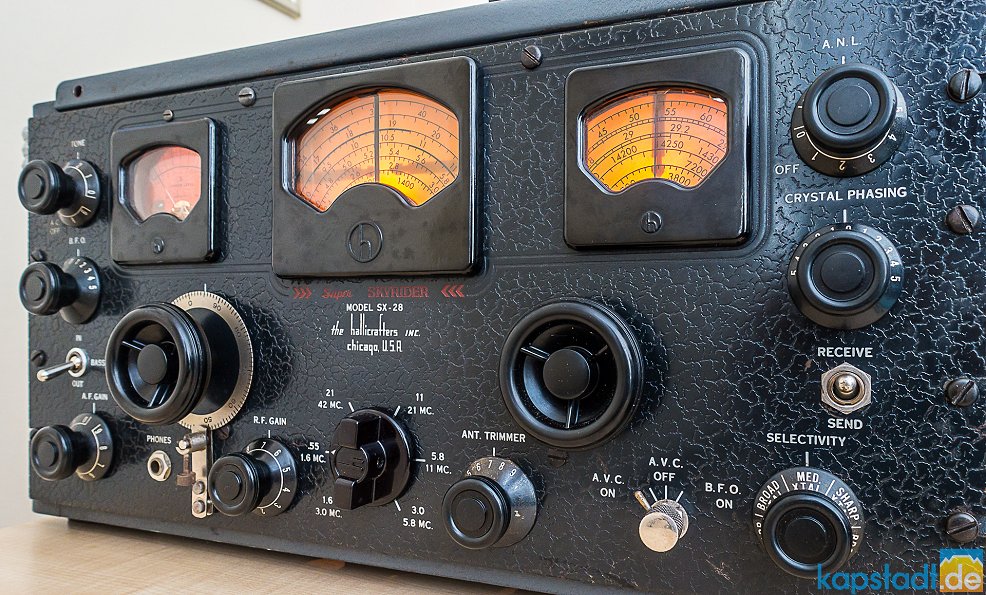 Hallicrafters SX28 in switched on state with typical scale illumination
Hallicrafters SX28 in switched on state with typical scale illumination
Wow, - what a piece of jewelry! I could hardly believe my eyes. The condition was more than just good, - for an age of over 80 years, the SX-28 is even extremely well preserved.
And all original as far as I can judge as a layman regarding old radio technology. No switch or knob was missing or replaced by something similar, which coincided with the statements of the previous owner. No rust or significant signs of wear. Only the right side of the case shows slight damage to the original paint. The inscribed scales of the instruments seem to be all faded by light and partly darkened,- especially the scale of the S-meter. A closer inspection of the (hinged) interior and the underside with the high frequency part did not reveal any obviously replaced parts or components,- and that, where after 80 years the (paper) capacitors should hardly work anymore and should almost necessarily be replaced completely.
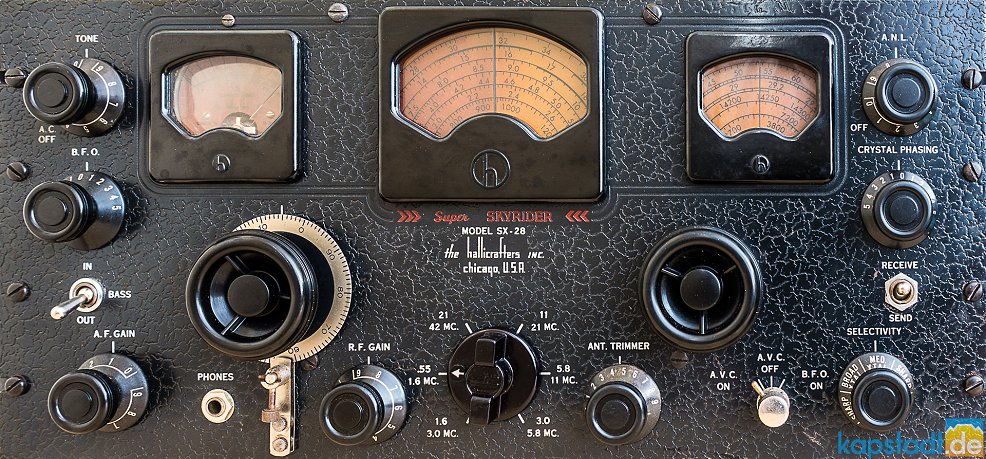 Hallicrafters SX-28 "Super Skyrider" - Front view
Hallicrafters SX-28 "Super Skyrider" - Front view
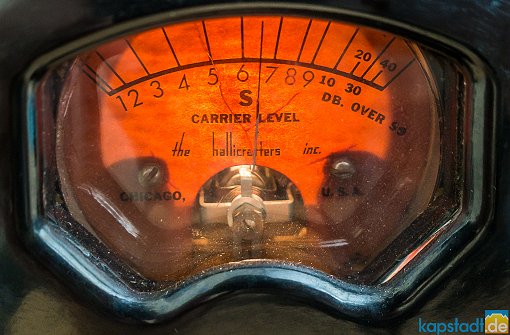 The Hallicrafters SX-28 "S-Meter" for displaying the signal strength
The Hallicrafters SX-28 "S-Meter" for displaying the signal strength
The unit was turned on with low expectations and after a short warm-up period, the receiver was already giving a noise.
The S-meter moved from the right stop back to S2 and the reddish scale illumination typical of the SX-28 left me in awe. For further tests, a 20m copper wire was screwed to the back of the SX-28 as an antenna and the receiver immediately brought the two medium wave stations "Cape Talk" on 567 kHz and "Magic Radio" on 828 kHz, which are well audible in Cape Town, cleanly to the speaker.
By the way, the Skyrider SX-28 has two audio outputs on the rear panel with 500 ohms and 5000 ohms,- fortunately, the Hallicrafters SX-28 was supplied by the previous owner with two modern speakers with built-in transformers, which transform the impedance to 8 ohms and are thus perfectly designed for playback. The sound is amazingly clean and with a lot of bass, especially when you add the bass switch on the front.
The comparison of the reception sensitivity with a Sony ICF-7600 world receiver (from 1983) brought of course a clear increase in reception power for the Sony, but the differences were by far smaller than feared.
Unlike the historic Morse key from 1916 (see below on this page), absolutely nothing will be renovated on this historic device and only the somewhat anyway barely dirty surfaces have been cleaned. The box with various tubes, components, pots and rotary switches thus remains untouched. The Hallicrafters SX-28 now stands as an eye-catcher next to the TV in the living room in Milnerton (suburb of Cape Town) and is gladly switched on when there is nothing on the TV box again.
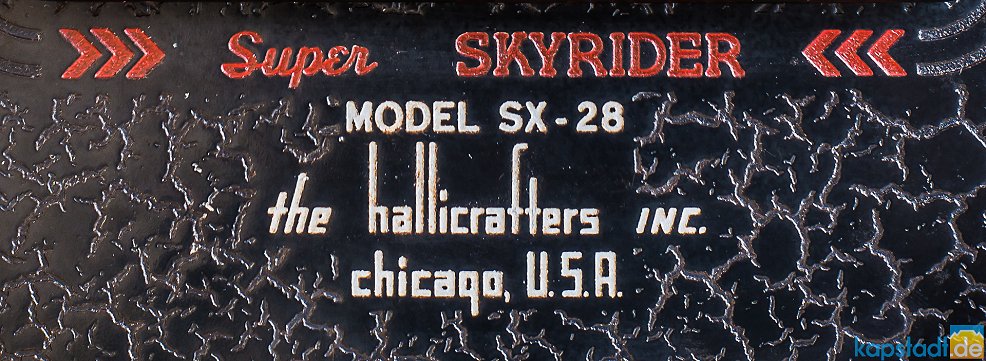
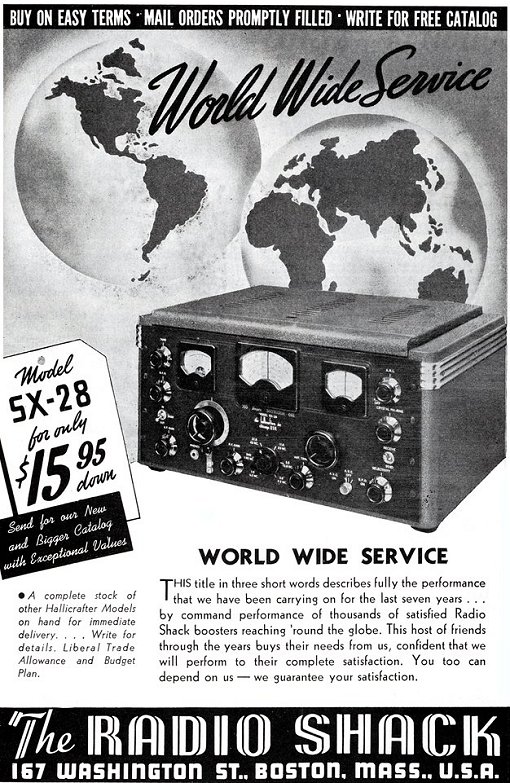
SX-28 - "Super Skyrider" (1941-1944)
William J. Halligan (1898-1992), founder of the long-defunct Hallicrafters Company, remains something of a cult hero in the dwindling but dedicated community of vintage radio collectors.
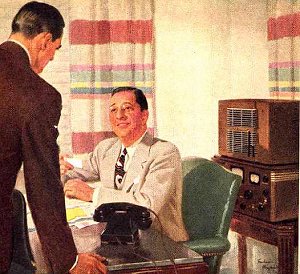 Founder Bill Halligan and his personal
Founder Bill Halligan and his personal
SX-28 in a 1944 magazine ad, Wikipedia.As followers like to mention, Bill Halligan himself was an active, lifelong ham radio operator (known by the call signs W9WZE and W9AC) who saw wireless communications as a powerful link to a larger world and made his name adapting the same technology for the benefit of American soldiers during World War II. (5)
Hallicrafters announced the SX-28 "Super Skyrider" in July 1940. The final design of the receiver was the result of analysis of more than 600 solicited reports, including input from U.S. government engineers.
Twelve Hallicrafters engineers were given the task of designing a receiver that not only met the requirements of the government and commercial users, but also would provide radio amateurs with a receiver that performed better than any previous Hallicrafters. In addition, the modern design of the 1940 SX-28 was to complement the receiver's superb technological performance.
The name "Skyrider" was intended to give Hallicrafters' products an aura of exotic adventure and had a long history with the company.
History of the SX-28 Skyrider
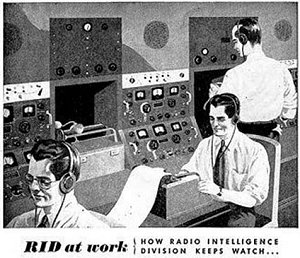
During World War II, the British intelligence agency GC&CS conducted a large-scale operation to intercept and decode German radio messages in Morse code, which were mainly encrypted using the well-known Enigma cipher machine.
The messages were intercepted by the so-called Y-stations, which were spread all over the country, but could also be found in other parts of the world.
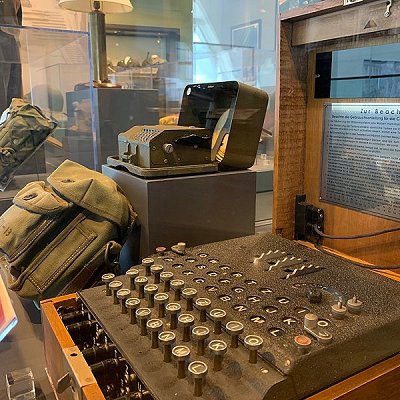 Encryption using "Enigma" cipher machine
Encryption using "Enigma" cipher machine
Photo by Nattnewl, CC BY-SA 4.0 via Wikimedia Commons
A good example of a Y station is the one at Beaumanor Hall, a large estate in the small village of Woodhouse (Leicestershire, United Kingdom) that was used for military intelligence during World War II.
The radio messages, mostly encrypted with Enigma devices, were sent to Bletchley Park for decryption. There, a team of more than 12,000 people, consisting of code breakers and engineers, broke German codes on a daily basis on a large scale.
A series of listening huts disguised as stables and cricket pavilions were set up at Beaumanor Park, where a number of interceptors, including the SX-28, were deployed. Most of these units were 19-inch rackmount versions modified for 240V AC. Hallicrafters announced that 50,000 units of SX-28 and SX-28A were built by the end of production in 1946, but serial numbers indicate production was cut in half, or about 27,500 receivers. (4)
Many of the SX-28/28A still in existence today are in the hands of collectors of old radios and radio amateurs.
The controls of the SX-28 / "Skyrider
The Skyrider is a general AM receiver covering the frequencies 550 kHz to 43 MHz in six bands. The circuit consists of 15 tubes in a front-end with double preselection on the upper four bands and single preselection on the lower two bands.
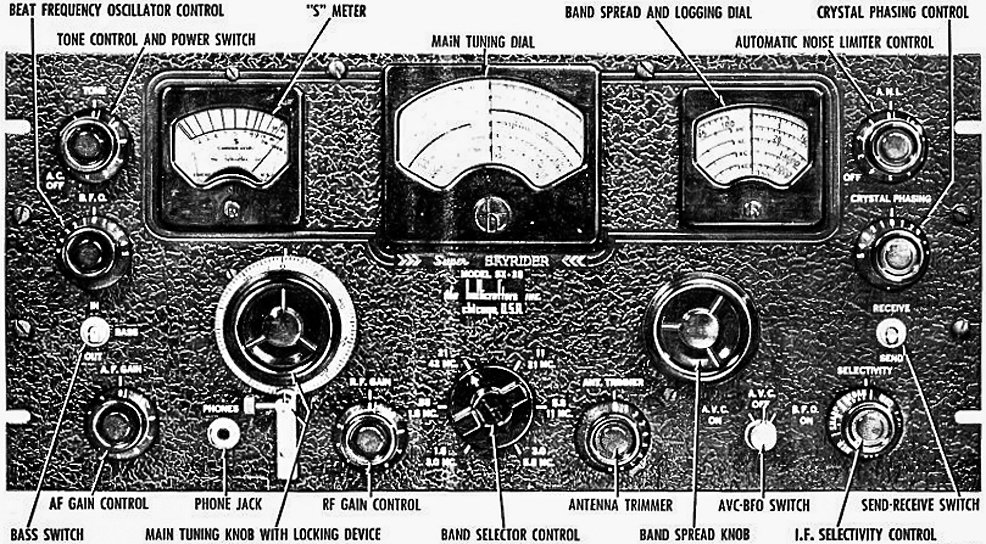 Hallicrafters SX-28 - Labeling of the switches and buttons on the front panel from the original manual
Hallicrafters SX-28 - Labeling of the switches and buttons on the front panel from the original manual
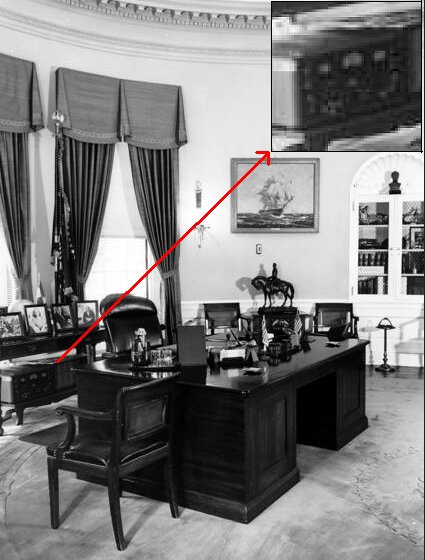 One SX-28 Hallicrafters was even in the "Oval Office" of the "White House" in Washington D.C. at the time of U.S. President Truman. Photo (17.9.1947) Wikipedia, Truman Museum webpage and public domain.
One SX-28 Hallicrafters was even in the "Oval Office" of the "White House" in Washington D.C. at the time of U.S. President Truman. Photo (17.9.1947) Wikipedia, Truman Museum webpage and public domain.
Special features include a variable IF bandwidth in three stages (sharp, narrow and wide IF), BFO (Beat Frequency Oscillator), crystal filter for CW (Morse code), automatic noise limiter (ANL), automatic volume control (AVC), calibrated band spread tuner, antenna trimmer and S-meter for signal strength indication.
The "push-pull audio amplifier" uses two 6V6 output tubes that provide excellent audio quality. The audio section has a bass boost switch and a variable tone control. A phono jack on the rear panel allows you to play an external source such as a turntable through the SX-28's amplifier.
A headphone jack is located on the front panel. On the rear are two connectors for a 500-ohm and 5,000-ohm speaker.
The receive/standby switch on the front is for use in conjunction with a transmitter. Switching to standby shuts down most of the receiver, but the tube heaters remain energized, so the unit comes back on almost immediately when you switch back to receive.
Hallicrafters made a number of minor changes during production of the SX-28 / SX-28A. For example, some units have an inline fuse on the back, others have a rectangular power socket on the back, or on some units you could switch the line voltage between 125V and 230V as on the SX-28 presented here. (1)
The AVC (automatic volume control) circuitry in the SX-28 is more complex than usual. It has two AVC circuits instead of the usual one. One circuit controls the first IF amplifier, while the other controls the RF amplifiers and the second IF amplifier.
The SX-28 Super Skyrider became one of the most popular amateur radios of all time, famous for its incredible sound, coupled with amazing sensitivity, stability and selectivity - all at a reasonable retail price.
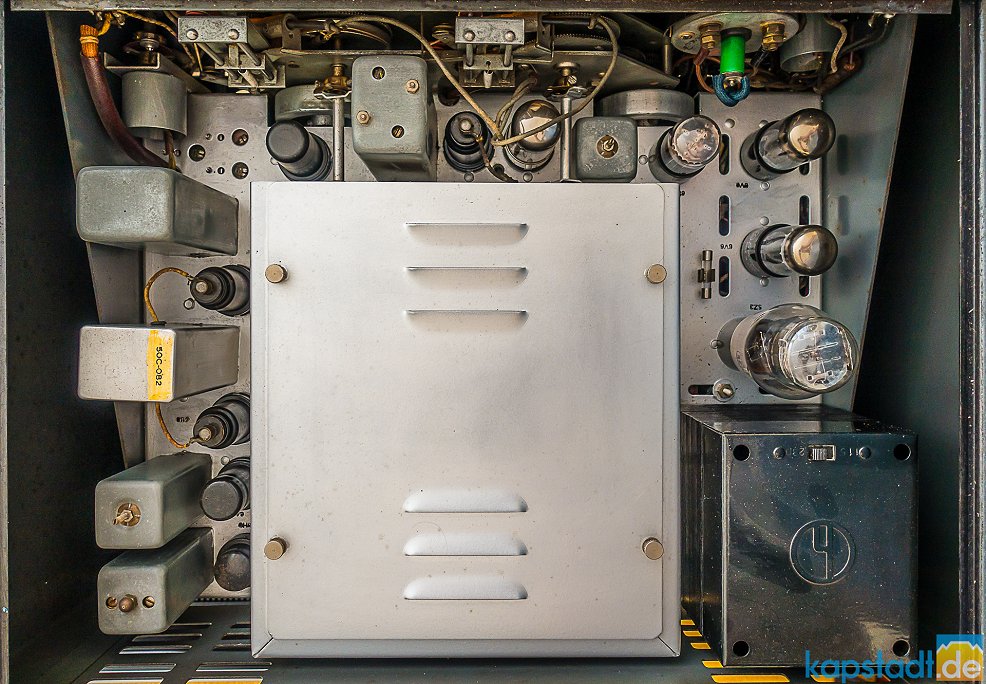 Hallicrafters SX-28 (Super Skyrider) - top view with lid open
Hallicrafters SX-28 (Super Skyrider) - top view with lid open
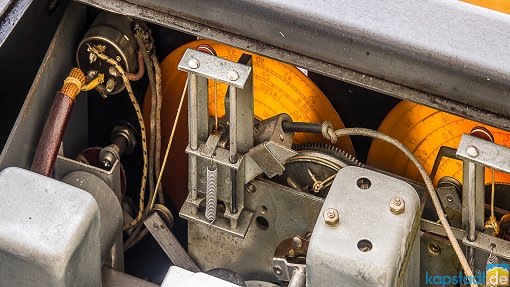 Hallicrafters SX-28 Skyrider - view of the inner workings of the radio
Hallicrafters SX-28 Skyrider - view of the inner workings of the radio
Over the years
the SX-28 is still an impressive receiver but it was just developed in 1940,- over 80 years ago!
There is no denying that its performance is outdated when compared to the performance of modern receivers. Even compared to some receivers built less than a decade later. In its day, the SX-28 Skyrider was Hallicrafters' "top of the line" model, and its performance was always competitive with other manufacturers' "top of the line" models from the era.
Granted, modern signals like SSB were never among its strengths, but the SX-28 is quite capable of receiving SSB signals without modification.
That's part of the nostalgia that owners of vintage equipment want to experience. Modifying a classic receiver in an effort to "modernize" its design goes against the idea of preserving and operating old equipment.

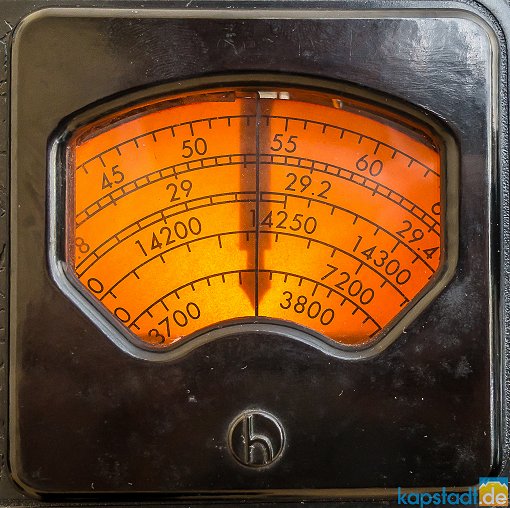 Separate scale with spread frequency range for the amateur radio range
Separate scale with spread frequency range for the amateur radio range
SX28 Hallicrafters on amateur radio (SSB)
Radio amateurs understandably find it difficult to use a receiver from this era in actual "on-the-air" operation, simply because of the fear that QRM from adjacent frequencies will severely limit the ability to successfully pick up stations.
However, the SX-28 Skyrider (and almost all other high quality vintage communications receivers) included a number of devices for "QRM mitigation" that are rarely used by AM amateurs.
A completely refurbished and tuned SX-28 receiver can be a pleasure to use - depending on one's expectations. The reproduction of the audio is what usually stands out and is the first positive thing mentioned in most reviews.
The SX-28 can sound incredibly good when receiving AM broadcast stations. No modifications to the original circuitry are required (nor recommended) for good performance on AM, CW, and even SSB signals, at least below 18 MHz. Above that, receive sensitivity decreases noticeably.
Sensitivity, selectivity and stability are quite good, considering that the circuit is over 80 years old.
CW/SSB signals can be received without problems, but you have to give the receiver time to "warm up" if you want to listen to SSB conversations. The receiver frequency will drift until it thermally stabilizes, which can take about 30 to 60 minutes, maybe longer. However, for normal listening and tuning, a few minutes of "warm-up" time is sufficient. (1)
Examples of SSB / AM recordings
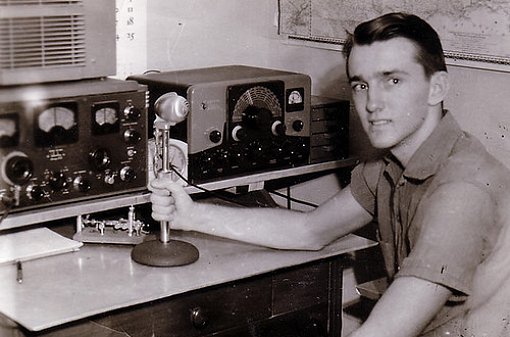 Station of W5BPH in 1955 - SX 28 Hallicrafters on the left side of the picture (Flickr)
Station of W5BPH in 1955 - SX 28 Hallicrafters on the left side of the picture (Flickr)
The SX-28 uses a "standard envelope detector" where the minimum BFO injection has to be set a bit tricky. Thus, one has to go back and forth with the RF gain since the AVC (Automatic Volume Control) cannot be used. This was normal standard on most communications receivers until the advent of product detectors in the mid-fifties.
Usually, the RF GAIN is set to "5" or less and the AF GAIN is set to "5" or more. If an SSB signal sounds distorted, the RF gain is too high.
If the RF gain is kept low, the detector will maintain the proper ratio of signal to BFO input, providing good SSB demodulation and intelligibility.
However, the SX-28 is truly no longer a perfect classic receiver today (especially for SSB amateur radio reception). The 80 year old radio has several problems at once when trying to make it work well on today's amateur radio bands. (1)
Historical recording of Hallicrafters in amateur radio around 1944

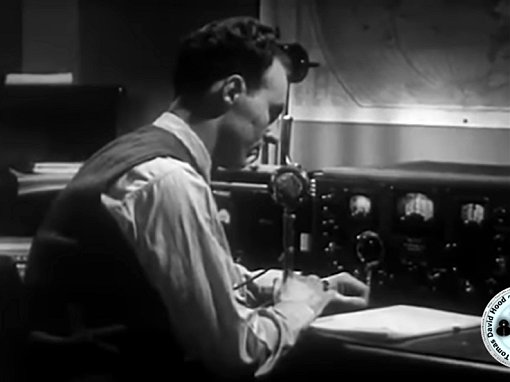 SX-28 Hallicrafters on Youtube as in the video above
SX-28 Hallicrafters on Youtube as in the video above
Serial number (H182426) and year of manufacture of the presented SX-28
Unfortunately, when Hallicrafters was acquired by Wilcox Instruments in the early 1970s, all records and data on serial numbers and archives were destroyed by order, so it is very difficult to accurately assign serial numbers, quantities, and the slightly different builds today.
The unit presented here is listed in Henry Rogers' WA7YBS-Radio Boulevard magazine (Western Historic Radio Museum) under "SX-28 WWII - 2/42 to 1/44." The SX-28 presented here is thus only about 500 examples away from the highest known serial number for this series, so the year of manufacture is almost certainly between December 1943 and January 1944. Production of the SX-28A series began in February 1944.
Sources and further information at:
1) radioblvd.com/hallicrafters_sx28__sx28a.htm
2) shortwaveradio.ch/doku.php?id=de:sx-28a
3) en.wikipedia.org/wiki/Hallicrafters_SX-28
4) cryptomuseum.com/df/sx28/index.htm
5) madeinchicagomuseum.com/hallicrafters/
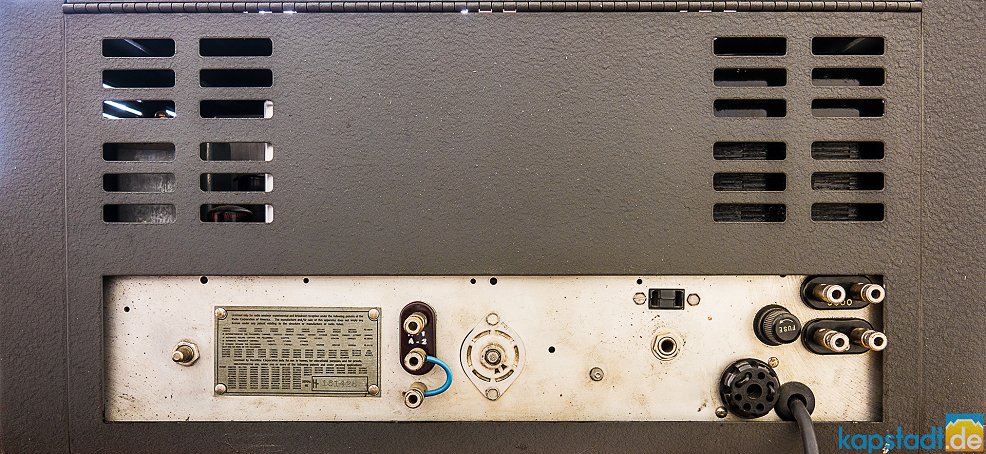 Skyrider Hallicrafters SX-28 rear view with antenna connector and 500 Ohm and 5000 Ohm speaker or headphone output
Skyrider Hallicrafters SX-28 rear view with antenna connector and 500 Ohm and 5000 Ohm speaker or headphone output
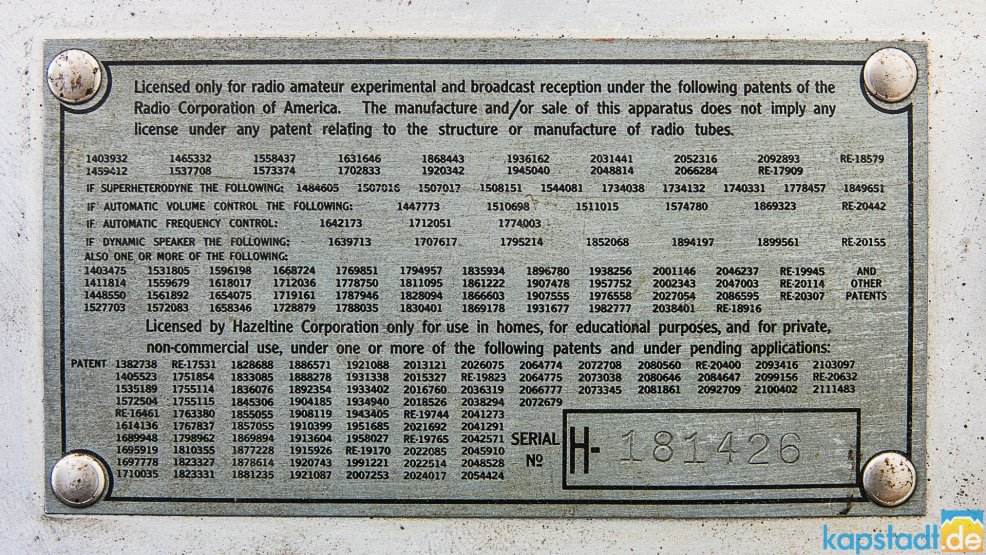 Hallicrafters SX-28 "Skyrider" - serial number: H181426 with probable year of construction 1944
Hallicrafters SX-28 "Skyrider" - serial number: H181426 with probable year of construction 1944
Historical morse key from 1916 as another found object
In 2018, an old Elliot Brothers morse key from 1916 fell into my hands at the Milnerton flea market in Cape Town. The seller must have thought the morse key was a tool for plumbers so the rotten morse key was lying among rotten pipe wrenches, strings, oily rags and old soldering equipment.
The British morse key is of the GPO type, manufactured by the Elliott company in London during the First World War around 1916. The Elliott company was founded in 1880. In 1898, the company moved its production to Lewisham near London. It produced high quality instruments for navigation, surveying and telegraphy, including just Morse keys. The key is made of brass. This Morse key was most likely used by the South African postal service.
Whether the thorough renovation of the old morse key was really necessary or the historical "patina" would have been better, stimulates discussions among collectors with pleasure.
